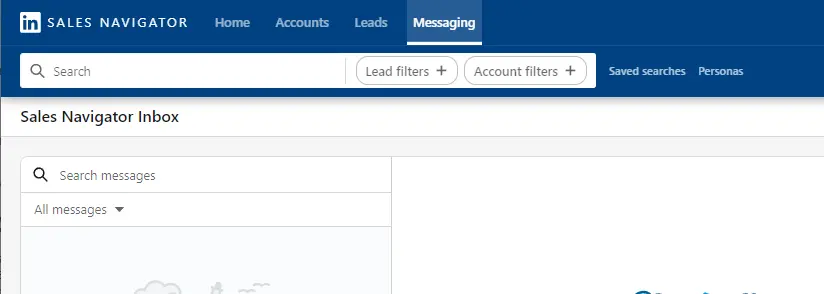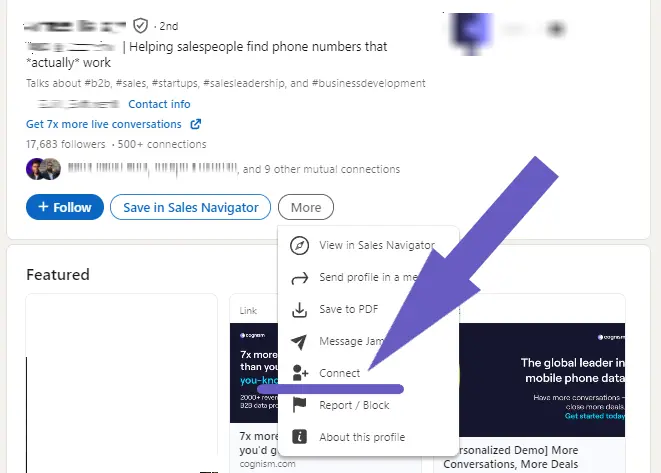





Marketing and sales automation uses software to automate repetitive tasks.
By the way, we're Bardeen, we build a free AI Agent for doing repetitive tasks.
If you're into automation, check out our AI for sales. It can help with prospecting, lead generation, and email outreach, making your sales process more efficient.
In the fast-paced world of business, companies are always looking for ways to improve their marketing and sales processes. With the rise of automation tools, it's now possible to take your marketing and sales efforts to the next level. But what exactly is marketing and sales automation, and how can it benefit your business?
Marketing and sales automation refers to the use of software and AI to automate repetitive tasks, such as email campaigns, lead nurturing, and customer segmentation. By automating these tasks, businesses can save time, increase efficiency, and ultimately close more deals. In fact, studies show that companies that use marketing automation see a 451% increase in qualified leads.
But automation isn't just about saving time - it's also about providing a better experience for your customers. With automated personalization and targeted messaging, you can deliver the right content to the right people at the right time. Plus, by automating your sales process, you can ensure that no lead falls through the cracks.
In this comprehensive guide, we'll dive deep into the world of marketing and sales automation. We'll cover the key features of automation tools, the benefits of implementation, and best practices for success. Whether you're a small business owner or a marketing executive at a large corporation, this guide will provide you with the knowledge and skills you need to take your marketing and sales efforts to the next level.
So, are you ready to discover the power of automation? Let's get started!
Marketing and sales automation refers to the use of software and technology to streamline, automate, and measure marketing and sales tasks and workflows. It enables businesses to target customers with automated messages across email, web, social, and text, and automate repetitive tasks to increase efficiency and reduce human error.
Marketing automation focuses on automating marketing processes such as lead generation, segmentation, lead nurturing and scoring, and campaign management. It uses tools designed to simplify and streamline time-consuming responsibilities of modern marketing departments.
Marketing automation systems are designed to scale alongside your business. They allow you to implement digital marketing strategies without having to manually send each email, message, campaign, or post you create.
Sales automation refers to automating sales tasks such as contact management, sales forecasting, order processing and tracking, and performance evaluation. It aims to reduce time spent on administrative tasks so sales reps can focus more on selling.
Sales automation tools are often integrated with CRM systems to provide a complete view of prospects and customers across the sales pipeline. Common features include email templates, automated sales alerts and tasks, and auto-dialing.
While marketing automation focuses on top-of-funnel activities to generate and nurture leads, and sales automation focuses more on bottom-funnel activities to convert leads into customers, there is significant overlap and integration between the two.
For example, when a marketing-qualified lead reaches a certain lead score threshold, it can be automatically routed to a sales rep for follow-up. Conversely, if a deal stalls, it can be automatically sent back to marketing for further lead nurturing.
The key is to have seamless handoffs and an integrated system for data sharing between marketing and sales.
By integrating marketing and sales automation, companies can:
In summary, marketing and sales automation are two sides of the same coin. They work together to streamline the end-to-end customer acquisition process.
Next, we'll explore the key features to look for in marketing and sales automation tools and how to choose the right system for your business. For more on sales prospecting tools, read our related post.
Marketing and sales automation tools offer a range of features designed to streamline processes, personalize campaigns, and drive better results. From email marketing to lead management, these platforms provide an integrated suite of capabilities. Let's explore the key features to look for when evaluating marketing and sales automation solutions.
A robust marketing automation platform should enable you to plan, execute, and track campaigns across multiple channels, such as email, social media, web, and mobile. Look for tools that provide an intuitive campaign builder with drag-and-drop functionality, allowing you to create targeted campaigns quickly and easily.
For example, HubSpot's campaign management tool lets you build complex, multi-touch campaigns with triggers, conditions, and actions to deliver personalized experiences at scale. By automating campaigns across channels, you can save time while improving engagement and conversion rates.
Email remains a critical channel for engaging prospects and customers. Marketing automation platforms should offer advanced email capabilities, including responsive templates, dynamic content, A/B testing, and automated drip sequences. These features enable you to create highly targeted and personalized email campaigns that drive results.
Mailchimp, for instance, provides an easy-to-use email builder with pre-designed templates and the ability to customize designs. You can segment your email list based on subscriber data and behaviors, and set up automated email series to nurture leads and keep customers engaged.
Effective lead management is essential for turning prospects into customers. Marketing automation tools should provide lead capture forms, lead scoring, segmentation, and nurturing capabilities. Look for platforms that can automatically route leads to the right sales reps based on predefined criteria and provide a complete view of each lead's interactions and behaviors.
Marketo, a leading marketing automation platform, offers advanced lead management features. You can build landing pages and forms to capture leads, score leads based on demographic and behavioral data, and create automated nurture programs to guide leads through the funnel. Marketo also integrates with popular CRMs like Salesforce, ensuring seamless lead handoff between marketing and sales.
Save time and reduce manual work. Try these prospect list building automations to boost your lead generation efforts.
Marketing and sales automation tools with AI capabilities can further optimize lead management. AI-powered lead scoring models can analyze vast amounts of data to predict which leads are most likely to convert, helping teams prioritize their efforts.
In summary, the key features to prioritize in marketing and sales automation platforms are multichannel campaign management, advanced email marketing, comprehensive lead management, sales automation functionalities, and AI-powered optimization. By choosing a tool that excels in these areas, you'll be well-equipped to streamline your marketing and sales processes and drive better business results.
Next up, we'll dive into the benefits of implementing marketing and sales automation, from increased productivity to improved ROI.
Implementing marketing and sales automation can provide numerous benefits for businesses looking to improve their lead generation, nurturing, and conversion processes. By automating repetitive tasks and personalizing the customer journey, companies can save time and resources while driving better results. Let's explore the key advantages of marketing and sales automation.
Marketing automation enables businesses to capture leads more effectively through targeted campaigns and personalized content. For example, a software company can use automation to send tailored emails based on a prospect's behavior, such as the pages they visited on the website or the resources they downloaded. This approach helps nurture leads and move them closer to a sale.
By automating lead nurturing, businesses can maintain consistent communication with prospects without overburdening their sales team. Automated drip campaigns, triggered by specific actions or timelines, ensure that leads receive relevant information at the right time, keeping them engaged and interested in the company's offerings.
Sales automation streamlines the sales process, enabling representatives to focus on high-value activities such as closing deals and building relationships. By automating tasks like lead assignment, follow-up emails, and appointment scheduling, sales teams can work more efficiently and effectively.
Moreover, automation tools can prioritize leads based on their likelihood to convert, ensuring that sales reps focus their efforts on the most promising opportunities. This targeted approach leads to higher conversion rates and revenue growth. A study by Nucleus Research found that marketing automation drives a 14.5% increase in sales productivity and a 12.2% reduction in marketing overhead.
Implementing marketing and sales automation can significantly reduce costs associated with manual, repetitive tasks. Automation tools handle tasks such as email campaigns, social media posting, and data entry, freeing up time for marketing and sales teams to focus on strategic initiatives.
Additionally, automation improves efficiency by eliminating human error and ensuring consistent, timely execution of marketing and sales processes. By streamlining workflows and reducing the need for manual intervention, businesses can save both time and money while achieving better results. For instance, automating lead enrichment and qualification can save significant time.
The benefits of marketing and sales automation are clear: improved lead generation and nurturing, increased sales productivity and conversion rates, and significant cost savings through efficiency gains. By leveraging automation tools, businesses can create a more effective and sustainable growth strategy.
Get ready to dive into the next section, where we'll explore the challenges and best practices for successfully implementing marketing and sales automation. From common pitfalls to avoid to proven strategies for aligning automation with your overall business goals, you won't want to miss these insights!
Implementing marketing and sales automation can present various challenges, from selecting the right tools to aligning automation with overall business strategy. However, by following best practices and addressing common pitfalls, companies can successfully integrate automation into their processes, improving efficiency and driving growth. In this section, we'll explore the challenges and best practices associated with marketing and sales automation.
One of the most significant challenges in implementing automation systems is avoiding common pitfalls. For example, many companies make the mistake of automating processes without first clearly defining their goals and objectives. This can lead to inefficiencies and wasted resources.
To avoid this, it's essential to start by identifying the specific areas where automation can provide the most value. This might include lead generation, nurturing, or customer service. Once you've identified these areas, you can then select the appropriate tools and develop a clear implementation plan.
To ensure the success of your marketing and sales automation efforts, consider the following best practices:
By following these best practices, you can maximize the benefits of automation while minimizing the risk of common pitfalls.
Another critical challenge in implementing marketing and sales automation is ensuring that it aligns with your overall business strategy. Automation should not be viewed as a standalone solution, but rather as a tool to support and enhance your existing processes.
To achieve this alignment, it's essential to involve key stakeholders from across the organization in the planning and implementation process. This includes representatives from marketing, sales, customer service, and IT. By working collaboratively, you can ensure that automation supports your broader business goals and drives measurable results.
Save time on repetitive tasks and focus on what matters. Use Bardeen's automated workflows to streamline your sales process today!
The key takeaways from this section are the importance of avoiding common pitfalls, following best practices, and aligning automation with overall business strategy. By addressing these challenges head-on, companies can unlock the full potential of marketing and sales automation.
Thanks for sticking with us through this comprehensive guide on marketing and sales automation! We know it's a lot of information to digest, but trust us, becoming an automation expert is well worth the effort. Just think of all the time you'll save and the leads you'll convert!
Understanding marketing and sales automation is crucial for businesses looking to streamline processes, improve efficiency, and drive growth.
Don't let manual processes hold your business back - become a marketing and sales automation expert today, or risk falling behind your competitors in the race for efficiency and growth!










SOC 2 Type II, GDPR and CASA Tier 2 and 3 certified — so you can automate with confidence at any scale.
Bardeen is an automation and workflow platform designed to help GTM teams eliminate manual tasks and streamline processes. It connects and integrates with your favorite tools, enabling you to automate repetitive workflows, manage data across systems, and enhance collaboration.
Bardeen acts as a bridge to enhance and automate workflows. It can reduce your reliance on tools focused on data entry and CRM updating, lead generation and outreach, reporting and analytics, and communication and follow-ups.
Bardeen is ideal for GTM teams across various roles including Sales (SDRs, AEs), Customer Success (CSMs), Revenue Operations, Sales Engineering, and Sales Leadership.
Bardeen integrates broadly with CRMs, communication platforms, lead generation tools, project and task management tools, and customer success tools. These integrations connect workflows and ensure data flows smoothly across systems.
Bardeen supports a wide variety of use cases across different teams, such as:
Sales: Automating lead discovery, enrichment and outreach sequences. Tracking account activity and nurturing target accounts.
Customer Success: Preparing for customer meetings, analyzing engagement metrics, and managing renewals.
Revenue Operations: Monitoring lead status, ensuring data accuracy, and generating detailed activity summaries.
Sales Leadership: Creating competitive analysis reports, monitoring pipeline health, and generating daily/weekly team performance summaries.